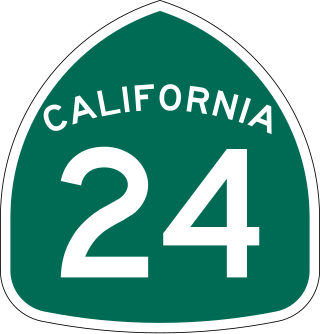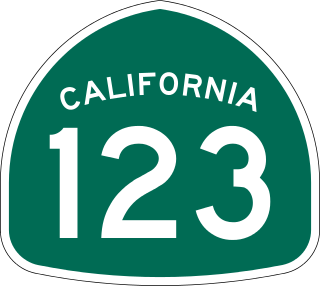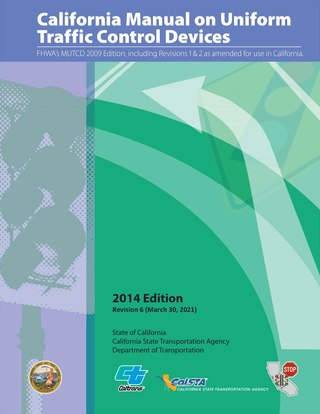The University of California, Berkeley College of Engineering is the public engineering school of the University of California, Berkeley. Established in 1931, the college occupies fourteen buildings on the northeast side of the main campus and also operates the 150-acre (61-hectare) Richmond Field Station. It is considered to be highly selective and is consistently ranked among the top engineering schools in both the nation and the world.
The Texas A&M Transportation Institute (TTI) in Bryan/College Station, Texas is a transportation research agency in the United States. The institute was created in 1950, primarily in response to the needs of the Texas Highway Department. TTI is a state agency and a member of the Texas A&M University System.

State Route 13 is a state highway in the U.S. state of California. It runs entirely in Alameda County, connecting Interstate 580 in Oakland to Interstate 80/Interstate 580 in Berkeley.

State Route 24 is a heavily traveled east–west state highway in the U.S. state of California that serves the eastern side of the San Francisco Bay Area. A freeway throughout its entire length, it runs from the Interstate 580/Interstate 980 interchange in Oakland, and through the Caldecott Tunnel under the Berkeley Hills, to the Interstate 680 junction in Walnut Creek. It lies in Alameda County, where it is highly urban, and Contra Costa County, where it passes through wooded hillsides and suburbs. SR 24 is a major connection between the San Francisco–Oakland Bay Bridge/MacArthur Maze complex and the inland cities of the East Bay.

State Route 123 is a 7.39-mile (11.89 km) state highway in the U.S. state of California in the San Francisco Bay Area. Named San Pablo Avenue for almost its entire length except for its northernmost 0.10 miles (0.16 km), SR 123 is a major north–south state highway along the flats of the urban East Bay. Route 123 runs between Interstate 580 in Oakland in the south and Interstate 80 at Cutting Boulevard in Richmond in the north. San Pablo Avenue itself, a portion of Historic US 40, continues well past the SR 123 designation south to Downtown Oakland and north to Crockett.

The Pennsylvania Department of Transportation (PennDOT) oversees transportation issues in the Commonwealth of Pennsylvania. The administrator of PennDOT is the Pennsylvania Secretary of Transportation, Michael B. Carroll. PennDOT supports nearly 40,000 miles (64,000 km) of state roads and highways, about 25,000 bridges, and new roadway construction with the exception of the Pennsylvania Turnpike Commission.
The Research and Innovative Technology Administration (RITA) is a unit of the United States Department of Transportation (USDOT). It was created in 2005 to advance transportation science, technology, and analysis, as well as improve the coordination of transportation research within the department and throughout the transportation community.
Vehicular communication systems are computer networks in which vehicles and roadside units are the communicating nodes, providing each other with information, such as safety warnings and traffic information. They can be effective in avoiding accidents and traffic congestion. Both types of nodes are dedicated short-range communications (DSRC) devices. DSRC works in 5.9 GHz band with bandwidth of 75 MHz and approximate range of 300 metres (980 ft). Vehicular communications is usually developed as a part of intelligent transportation systems (ITS).
The Harmer E. Davis Transportation Library —also known as the Institute of Transportation Studies Library (ITSL), the Berkeley Transportation Library, or simply as the Transportation Library— is a transportation library at the University of California, Berkeley, devoted to transportation studies.

California's transportation system is complex and dynamic. Although known for its car culture and extensive network of freeways and roads, the state also has a vast array of rail, sea, and air transport. Several subway, light rail, and commuter rail networks are found in many of the state's largest population centers. In addition, with the state's location on the West Coast of the United States, several important ports in California handle freight shipments from the Pacific Rim and beyond. A number of airports are also spread out across the state, ranging from small general aviation airports to large international hubs like Los Angeles International Airport and San Francisco International Airport.
The Institute of Transportation Studies (ITS) at the University of California's Berkeley, Davis, Irvine, and Los Angeles campuses are centers for research, education, and scholarship in the fields of transportation planning and engineering. Faculty members, staff researchers, and graduate students comprise this multidisciplinary institute network of more than 400 people, which administers an average of $20 million in research funds each year. ITS Berkeley is an organized research unit with nine affiliated organizations and an eight-member advisory council.
The California Center for Innovative Transportation (CCIT) was a research organization at the University of California, Berkeley Institute of Transportation Studies.
The National Center of Excellence in Aviation Operations Research (NEXTOR), is part of a national alliance of research institutes with centers dedicated to the advancement of new ideas, the training of professionals, and the growth of knowledge in the field of aviation operations.
The AAA Foundation for Traffic Safety is a non-profit, charitable organization based in Washington, DC, that is dedicated to saving lives through traffic safety research and education. Since its founding in 1947, the AAA Foundation has sponsored over 200 projects related to highway safety, covering topics such as distracted, impaired, and drowsy driving; road rage; graduated driver licensing; driver's education and training; and pedestrian safety. The AAA Foundation research agenda is centered on four priority areas: Driver behavior and performance, emerging technologies, roadway systems and drivers and vulnerable road users.
J. Karl Hedrick was an American control theorist and a professor in the Department of Mechanical Engineering at the University of California, Berkeley. He made seminal contributions in nonlinear control and estimation. Prior to joining the faculty at the University of California, Berkeley he was a professor at the Massachusetts Institute of Technology from 1974 to 1988. Hedrick received a bachelor's degree in Engineering Mechanics from the University of Michigan (1966) and a M.S. and Ph.D. from Stanford University.
Paramics is traffic microsimulation software, originally developed by Quadstone Ltd. There is a related pedestrian microsimulation product called the Urban Analytics Framework.

The UC Irvine Institute of Transportation Studies (ITS), is a University of California organized research unit with sister branches at UC Berkeley, UC Davis, and UCLA. ITS was established to foster research, education, and training in the field of transportation. UC Irvine ITS is located on the fourth floor of the Anteater Instruction and Research Building at University of California, Irvine's main Campus, and also houses the UC Irvine Transportation Science graduate studies program.

The Eno Center for Transportation is a non-profit, independent organization based in Washington, D.C., with the stated mission of shaping public debate on critical multimodal transportation issues and to build an innovative network of transportation professionals. The Center was created and endowed in Westport, Connecticut, by William Phelps Eno, a pioneer in the field of traffic control.

People who are driving as part of their work duties are an important road user category. First, workers themselves are at risk of road traffic injury. Contributing factors include fatigue and long work hours, delivery pressures, distractions from mobile phones and other devices, lack of training to operate the assigned vehicle, vehicle defects, use of prescription and non-prescription medications, medical conditions, and poor journey planning. Death, disability, or injury of a family wage earner due to road traffic injury, in addition to causing emotional pain and suffering, creates economic hardship for the injured worker and family members that may persist well beyond the event itself.

The California Manual on Uniform Traffic Control Devices is the standard for traffic signs, road surface markings, and traffic signals in the U.S. state of California. It is developed by the California Department of Transportation (Caltrans) Division of Safety Programs "in substantial conformance to" the national Manual on Uniform Traffic Control Devices developed by the Federal Highway Administration. The first edition of the CA MUTCD was published in 2006, replacing an earlier supplement to the national MUTCD. The most recent edition was published in 2014, incorporating the 2009 edition of the national MUTCD. California is one of ten states that publish their own editions of the MUTCD. The CA MUTCD defines the content and placement of traffic signs. Design specifications are detailed on a section of the Caltrans website that is based on the national Standard Highway Signs and Markings (SHSM) document.